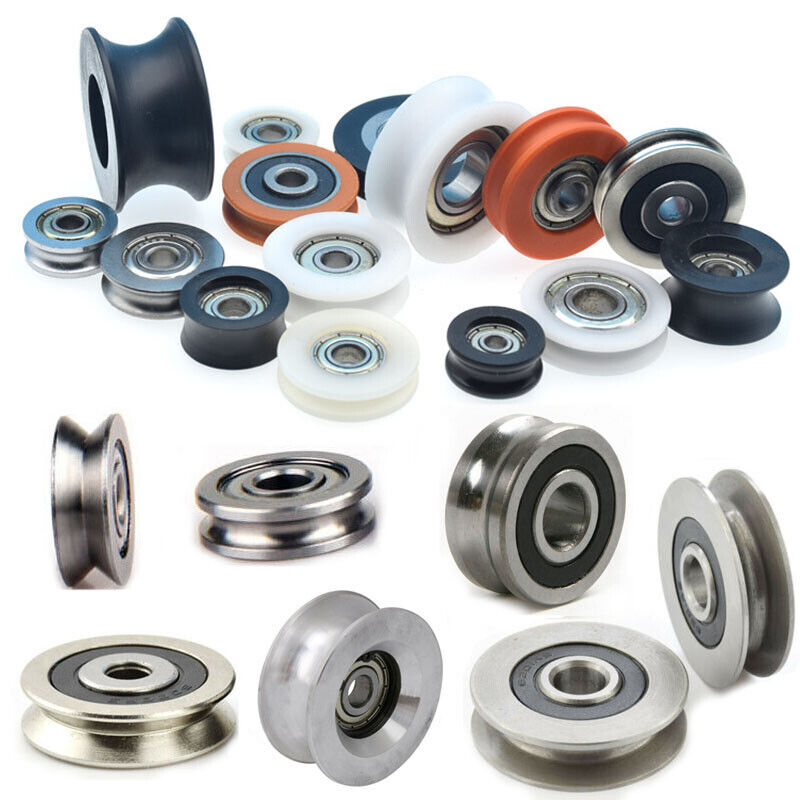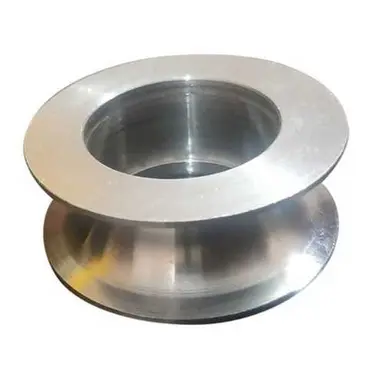Product Description
Our Services
Product Design Material Selection
Mold Design Mold Making
Bulk Production Logo Printing
Surface Treatment Assembling
Packaging Door to Door Delivery
| Material | Nylon ,mc nylon, POM,ABS,PU,PP,PE,PTFE,UHMWPE,HDPE,LDPE, PVC,etc. |
| Color | Black, white, red, green, transparent or any color according to Pantone code |
| Size | As per customer’s requirements |
| Technology | Injection molding, CNC machining, Extrusion |
| Surface Treatment | Powder coating, Zinc coating, Galvanization, Electro-deposition coating, Chrome/zinc/nickel plating, Polishing, Silkscreen, Black oxide |
| Application | Automotive, ATV, Mechanical equipment, Construction, Home appliance, Aviation, Office facilities, Agriculture, etc. |
| Shippment | We have longterm cooperation with internation shipping agent and express company, so that shipping safty and arriving time are secured |
Detail Image
Why Choose Us
Zhongde is a leading manufacture of OEM parts in rubber & plastic & metal parts. We are always pursuing providing better quality products in shorter period. With a knowledgeable team which has experience in molding and production, we are confident to help you develop and manufacture your product
Our Machine
Product Range
Contact Us
| Certification: | CE, ISO |
|---|---|
| Pulley Sizes: | Type D |
| Manufacturing Process: | Forging |
| Samples: |
US$ 999/Piece
1 Piece(Min.Order) | Order Sample For sample price, package information, and logisti
|
|---|
| Customization: |
Available
| Customized Request |
|---|
.shipping-cost-tm .tm-status-off{background: none;padding:0;color: #1470cc}
|
Shipping Cost:
Estimated freight per unit. |
about shipping cost and estimated delivery time. |
|---|
| Payment Method: |
|
|---|---|
|
Initial Payment Full Payment |
| Currency: | US$ |
|---|
| Return&refunds: | You can apply for a refund up to 30 days after receipt of the products. |
|---|

Can roller pulleys be retrofitted into existing conveyor systems for improvements?
Yes, roller pulleys can be retrofitted into existing conveyor systems to achieve various improvements. Retrofitting roller pulleys offers several benefits and can address specific operational challenges. Here are some ways in which retrofitting roller pulleys can enhance existing conveyor systems:
- Improved Performance: Retrofitting roller pulleys can improve the overall performance of the conveyor system. By upgrading to modern roller pulleys with advanced features, such as low rolling resistance, improved load distribution, or specialized coatings, the system can achieve better material handling, increased throughput, and reduced energy consumption.
- Enhanced Efficiency: Retrofitting roller pulleys can enhance the efficiency of the conveyor system. By replacing worn-out or outdated rollers with new ones, the system can operate more smoothly and reliably. Roller pulleys with precision bearings, reduced friction, or self-cleaning capabilities can minimize material jams, reduce maintenance requirements, and optimize the overall efficiency of material handling processes.
- Noise Reduction: Roller pulleys with noise-dampening features can be retrofitted to reduce the noise levels generated by the conveyor system. This is particularly beneficial in environments where noise reduction is a priority, such as warehouses located near residential areas or workplaces where a quieter atmosphere is desired.
- Increased Durability: Retrofitting roller pulleys can enhance the durability and longevity of the conveyor system. Upgrading to roller pulleys made from more robust materials or featuring improved corrosion resistance can extend the lifespan of the equipment, reducing the frequency of replacements and minimizing downtime due to maintenance or repairs.
- Compatibility with Upgrades: Retrofitting roller pulleys allows for compatibility with other upgrades or modifications to the conveyor system. For example, if the system is being upgraded with automation technologies, such as robotics or AGVs, roller pulleys can be retrofitted to ensure seamless integration and precise material handling between the conveyor system and the automated equipment.
- Cost-Effective Solution: Retrofitting roller pulleys is often a cost-effective solution compared to replacing the entire conveyor system. By selectively upgrading critical components, such as the roller pulleys, operators can achieve significant improvements in performance and efficiency while avoiding the expense of a complete system replacement.
Before retrofitting roller pulleys, it is essential to assess the compatibility of the existing conveyor system and ensure that the retrofitted components meet the specific requirements and constraints of the operation. Consulting with roller pulley manufacturers or industry experts can provide valuable guidance in selecting the appropriate roller pulleys and executing a successful retrofitting process.

How do roller pulleys contribute to the efficiency and productivity of material handling operations?
Roller pulleys play a crucial role in enhancing the efficiency and productivity of material handling operations in conveyor systems. Here are the ways in which roller pulleys contribute to these aspects:
- Smooth Material Flow: Roller pulleys provide a smooth surface for the conveyor belt to move on, minimizing friction and allowing materials to flow seamlessly. The low rolling resistance offered by roller pulleys reduces the energy required to transport materials, resulting in improved efficiency and optimized power consumption.
- Reduced Manual Effort: By utilizing roller pulleys, manual effort in material handling operations is significantly reduced. The rollers support the weight of the materials and facilitate their movement along the conveyor, eliminating or minimizing the need for manual pushing or lifting. This reduces physical strain on workers, increases their productivity, and lowers the risk of injuries.
- Flexibility and Versatility: Roller pulleys offer flexibility and versatility in material handling operations. They can be designed and configured to accommodate various conveyor layouts, including straight sections, curves, inclines, and declines. This adaptability allows for efficient material transfer across different areas of a facility or between different stages of a production process.
- Accurate Sorting and Distribution: Roller pulleys are often used in sorting and distribution applications, where precise and controlled movement of materials is required. By incorporating specialized rollers, such as tapered rollers or diverter rollers, conveyor systems can accurately divert, merge, or sort materials based on predetermined criteria. This improves the accuracy and speed of sorting operations, leading to enhanced productivity and throughput.
- Increased Throughput: Efficient material handling facilitated by roller pulleys results in increased throughput. The smooth movement of materials, reduced bottlenecks, and optimized flow contribute to higher processing speeds and improved overall production capacity. Conveyor systems with properly designed roller pulleys can handle larger volumes of materials, allowing for faster and more efficient material handling operations.
- Automation Integration: Roller pulleys are compatible with automation technologies, such as sensors, controllers, and robotic systems. This enables the integration of conveyor systems with automated material handling processes. By incorporating roller pulleys into automated systems, tasks such as material loading, unloading, sorting, and packaging can be streamlined and performed with high precision, further enhancing efficiency and productivity.
In summary, roller pulleys contribute to the efficiency and productivity of material handling operations by enabling smooth material flow, reducing manual effort, providing flexibility and versatility, facilitating accurate sorting and distribution, increasing throughput, and supporting automation integration. These benefits make roller pulleys an essential component in optimizing material handling processes across various industries and applications.

What types of rollers are typically used with roller pulleys?
Various types of rollers are commonly used in conjunction with roller pulleys to ensure the smooth movement of materials on conveyors. The specific type of roller selected depends on factors such as the application requirements, conveyor design, and the nature of the materials being transported. Here are some commonly used types of rollers:
- Gravity Rollers: Gravity rollers are simple and cost-effective rollers that rely on gravity to move materials along the conveyor. They are typically made of metal or plastic and have a series of cylindrical rollers mounted on a frame. Gravity rollers are often used in applications where materials are relatively lightweight and can be easily transported using the force of gravity.
- Drive Rollers: Drive rollers, also known as motorized rollers or power rollers, are equipped with integrated motors or driveshafts. These rollers provide the driving force to move the conveyor belt. Drive rollers are commonly used in powered conveyor systems where precise control over the movement of materials is required.
- Idler Rollers: Idler rollers are passive rollers that support the weight of the conveyor belt and the materials being transported. They are often used in combination with drive rollers or gravity rollers to provide additional support and help maintain proper belt tension. Idler rollers are available in various configurations, including troughed idlers, flat idlers, and impact idlers, depending on the specific application.
- Return Rollers: Return rollers are positioned beneath the conveyor belt to support the return side of the belt. They help maintain proper belt alignment and tension while the belt is returning back to the loading point. Return rollers are typically designed to minimize friction and ensure smooth belt operation.
- Tapered Rollers: Tapered rollers are conical-shaped rollers that are used in applications where materials need to be redirected or centered on the conveyor belt. The tapering design allows for smooth transitions and prevents materials from veering off the intended path.
- Impact Rollers: Impact rollers are specifically designed to absorb and cushion the impact of heavy or sharp-edged materials on the conveyor belt. They help protect the belt and extend its lifespan by reducing the stress and damage caused by impact loading.
These are just a few examples of the types of rollers that are commonly used with roller pulleys. The selection of the appropriate roller type depends on various factors such as the specific application, conveyor system design, and the characteristics of the materials being conveyed.


editor by CX
2023-12-15




















